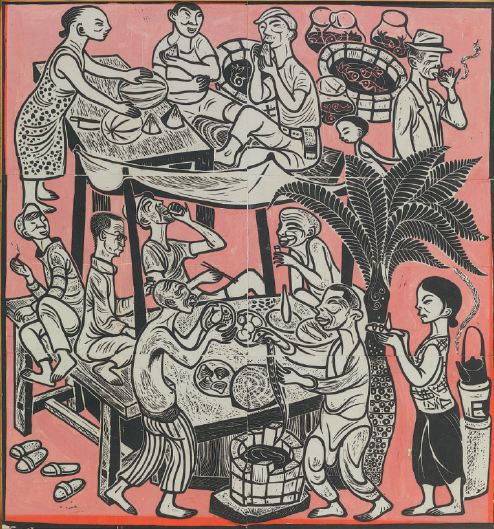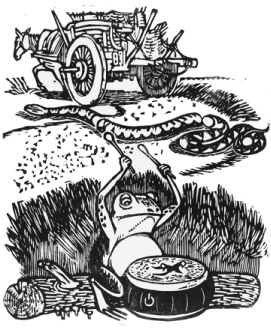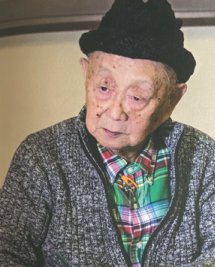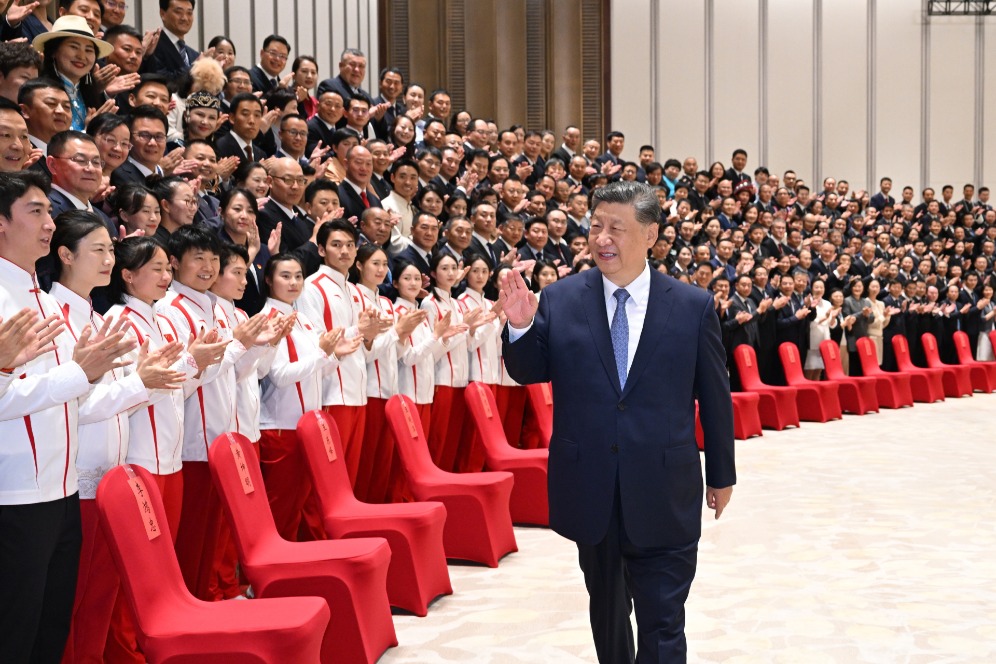Artistic impressions
Spanning half a century, woodcut prints by Huang Yongyu go on display in Beijing, Lin Qi reports.

Huang Yongyu is widely regarded as a legendary Chinese artist.
In his early teens, he left his hometown Fenghuang in Hunan province and traveled across the country. He basically taught himself how to draw, paint and write. He took on various jobs to support his artistic dream, working at ceramic workshops, teaching at primary schools, designing props for theater troupes and creating illustrations for magazines. He also composed poems, essays and novels.
His versatility won the recognition of well-established artists like Xu Beihong, former dean of the Central Academy of Fine Arts in Beijing, who invited Huang to be a professor at the school in the early 1950s.
Huang, now 96, is best known in art circles for his ink paintings which feature an animated palette and bold brush strokes to deliver a primitive beauty. However, it is his woodcut prints that are more popular among the general public, as they are widely exhibited and often published in magazines and books.
Within a small rectangle, normally no more than 50 centimeters in length or width, Huang depicts his love of life and shrewd observations of people. His woodcuts show how he confronts the world with sensibility, honesty, wit and a sense of humor.
Forceful Cuts, an exhibition now on at Beijing Fine Art Academy's museum through Sept 26, offers a rare review of Huang's woodcut creations, through which people will have a brief insight into both Huang's mind, and the rich journey upon which life has taken the artist.
"A sizable number of the woodcuts I have made in my life-probably around 400 pieces-are here (at the exhibition)," Huang says.
Huang has exhibited widely at home and abroad, although Forceful Cuts is his first solo show that's dedicated entirely to his woodcuts. Prints on show date back as far as 1946 and carry on through to pieces produced in the early 1990s, when he began investing more time and energy into the creation of his ink paintings.
Huang began to earn a living from painting and making woodblock prints at the age of 16. He says making woodcuts is laborious, but he got into the habit and it became an addiction.
When he was young, Huang made a big canvas backpack in which to put the woodcuts, tools for sculpting and printing and some favorite books, as well as a really heavy whetstone, which made him a subject of ridicule among his acquaintances.
"During the war, when I heard guns and explosions, I immediately grabbed the backpack and ran for my life," Huang recalls. "I carried these things around, as I moved from one place to another during the War of Resistance Against Japanese Aggression (1931-45) and throughout the decades afterward.
"I have never parted with them, they are like my bones. They document part of my history."
Huang says his art, the same as his literary work, is inseparable from the native culture of his birthplace, "an inexhaustible source" of inspiration for him.
Huang grew up in the ancient town of Fenghuang, which is now a county in Hunan province, known for its distinctive, well-preserved historical appearance and diverse ethnic cultures. A member of the Tujia ethnic group himself, Huang was nurtured by the dynamic arts and cultures of the Tujia and Miao groups inhabiting Fenghuang.
The strong impression of his hometown allows him to make works such as Miao Dance-one of the pieces on show at the exhibition-a print depicting a dancing Miao girl. The vivid details of the girl's ethnic outfits reflect a sense of homesickness and nostalgia that have accompanied Huang since he left Fenghuang.
The wealth of China's ethnic cultures also motivated Huang to produce his signature Ashima series comprising 10 colored prints, which are also on display.
Huang traveled to Yunnan province in 1954. During his two-month stay there, he heard a variety of folk tales. Among them, the one that touched him the most was Ashima, a long narrative poem passed down among generations of the Sani people, part of the Yi ethnic group.
Huang illustrated the tale that centers around Ashima, a beautiful and courageous girl, who fights for freedom against a cruel landlord whose son attempts to marry her against her will. The prints garnered wide acclaim as soon as they came out, and they quickly became collectible.
Huang requested that a section of Forceful Cuts be dedicated to prints inspired by trips to the Daxing'anling and Xiaoxing'anling forests in North China that he took with his late wife Zhang Meixi in the early 1950s. Several of them were created as illustrations for In the Wood, a children's book written by Zhang that was also based on their travels to the area.
After 75 years of marriage, aged 98, Zhang, a children's literature writer, died in May.
Zhang hailed from a well-off family in Guangdong province. She married Huang, then a talented but destitute young man, despite her family's opposition to the match. The two supported each other through much hardship for decades and the strength of their love is talked about with admiration.
Wang Mingming, former director of the Beijing Fine Art Academy and a close friend of the Huang family, says that because Huang has primarily created ink paintings over the past four decades, his woodcuts are therefore a little unfamiliar to people.
"The prints, undoubtedly the gems of our culture, show Huang's gift of art and his rich life experiences," Wang says. "He has formed a characteristic style comprising the elements of illustration, caricature and Chinese folk arts. His works are imaginative, genuine and pure."
Illustrations and caricatures ignited Huang's interest in art and ushered him into the world of humor. The profound influence is evident in the exaggerated and ludicrous styles that characterize his woodcuts.
"As a teenager, I enjoyed flipping through the many cartoon magazines published in Shanghai. I appreciated the perspectives of life being expressed by cartoon artists," Huang recalls. "Then I grew up to understand how to help myself and others relieve stress in a humorous way. Seeking strength in humor is a rather good attitude to life."
Wu Hongliang, director of the Beijing Fine Art Academy, says Huang's works touch people with a mix of modernity and "an aroma of soil"-the home culture-underneath which there is a sensible man whose intelligence resounds among generations of his audience.
Huang also impresses people with his diligence. He still regularly creates despite his advancing years. When the COVID-19 pandemic ravaged the country earlier this year, He joined in dozens of artists to create works to encourage people. He produced a colored ink painting showing a red cross and a hand making a victorious gesture, with an inscription that read, "The Chinese live in a commanding manner."
Huang says, "I have achieved little in my lifetime. I didn't receive much formal education, but I dare not live in laziness or without aim.
"I live every day in the same way as I work on every plank of wood, paying great attention between each cut and fearing mistakes."



Today's Top News
- Supercarrier to be put through paces
- Game changers for China's sports industry
- Nation drives global energy transition
- Tariff-troubled US fears not-so-happy holidays
- 'Looking China' brings American youth closer to Chinese culture
- National Games start new chapter






























